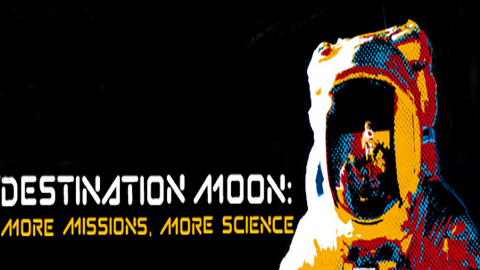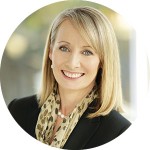A Spacewalk Through Ambition

National Science Week, celebrated across Australian schools this past week, incorporated the theme: ‘Destination Moon: more missions, more science’. The theme enabled students to discover past missions to the Moon and space programs that have solved some of the seemingly unsolvable problems—and current and future space programs, operations and missions. Many of these use big picture thinking in Science to solve problems, and Technology, Engineering and Mathematics to design new solutions. The opportunity to create future career pathways in the areas of space operations, space science, Earth observations, positioning systems and communications are ever-present for younger students in school today.
It was, therefore, most appropriate that our Science Week Keynote Address at Assembly was provided by space enthusiast Clare Kenyon from the School of Physics at the University of Melbourne.
Clare has nothing short of an outstanding list of educational attainment with completion of her Master of Science (Astronomy), Master of Arts (Education), Bachelor of Science (Mathematics, Physics and Geology) and a Diploma of Music (Double Bass) certainly impressive, and all completed by the time she was 28 years of age. To add to this extraordinary list, she is currently completing her Doctor of Philosophy (Astrophysics).
Clare admitted that as a school student she had wanted to withdraw from her Year 11 Physics class two weeks into Term 1, but her Physics teacher persuaded Clare to persist with the challenging course material. A decision she later did not regret given her career path in Science, and specifically Astrophysics. The lesson to ‘not give up’ when challenged by the rigour of curriculum was clearly extended to our students, with the notion of ensuring persistence and resilience with one’s academic studies resounding in the hall on Monday.
Clare was originally inspired as a young girl by the story of Mercury 13. The ‘Mercury 13’ were 13 American women who, as part of a privately funded program, underwent the same physical screening tests as the male astronauts selected by NASA in 1959 for Project Mercury. Project Mercury was the first human spaceflight program of the United States, running from 1958 through 1963. An early highlight of the Space Race, its goal was to put a man into Earth orbit and return him safely, ideally before the Soviet Union. The year 1959 was also a time when NASA excluded all women from space excursions. To the amazement of the researcher, 13 women (of 25) passed all three phases of physical and psychological testing and, in some cases, out performed their male counterparts of the Mercury 7 crew (considered the best astronauts in America).
Clare encouraged our Senior girls to be “curious by default” and to “find out why things happen”. She also implored our girls to “surround yourself with like-minded people” and ultimately to “set goals as high as the moon”.
Our Science Week Assembly also provided students Allison Duong (Year 10) and Lucy Campbell (Year 10) with the opportunity to share their own ventures in exploring Science fields. Ten of our Years 9 and 10 students were invited to participate in the ConocoPhillips Science Experience this year. For Allison, this included participating in Science workshops at the University of Melbourne over the summer holidays. Allison enjoyed her visit to the Anatomy Museum where she investigated ‘real’ body parts. Whilst confronting, Allison was fascinated to study the differences between diseased and healthy body parts.
Lucy’s experience at RMIT University enabled the opportunity to visit the Victorian Space Science Education Centre where they explored their own physical suitability for an exploration trip to Mars. This also included research into how to supply a station on Mars with appropriate water and electricity, in addition to launching rockets made throughout the course of the program.
This week, we have also celebrated the achievements of Tingquan (Gloria) Meng (Year 10). Tingquan achieved an ‘Outstanding Award’ in the highly prestigious and competitive University of Melbourne School Mathematics Competition. The gruelling three-hour examination is pitched at a very high level with only seven complex questions to complete (I have included the first question for your interest below). Tingquan’s achievement as the highest female score in the Intermediate division was assisted by working through the problem solving equations undertaken in our Mathematics Honours Program under the guidance of Mathematics teachers, Mrs Amanda Ladbury-Webb and this year, Mr Wei Wang. On behalf of the School, I congratulate Tingquan for this fine achievement.
St Catherine’s Gala Concert
Preparations for the Gala Concert were the focus of over 100 students and staff attending Music Camp last week. The Band, Strings and Choral rehearsals I enjoyed on Saturday afternoon during my visit to Camp were truly wonderful and I believe the 2019 Gala Concert promises to be a memorable evening of music.
Tickets are now limited and can be purchased here.





